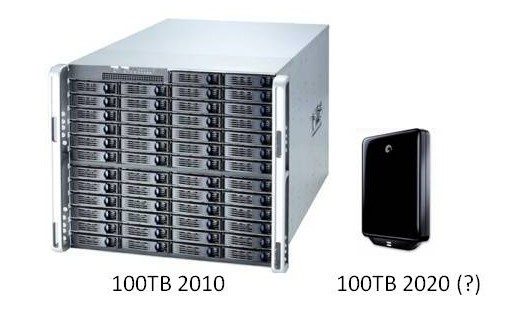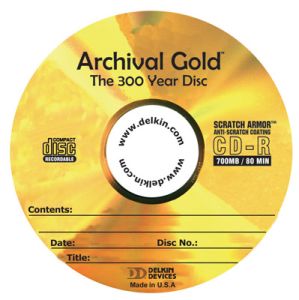In Trevor Owen’s excellent blog post ‘What Do you Mean by Archive? Genres of Usage for Digital Preservers’, he outlines the different ways ‘archive’ is used to describe data sets and information management practices in contemporary society. While the article shows it is important to distinguish between tape archives, archives as records management, personal papers and computational archives, Owens does not include an archival ‘genre’ that will become increasingly significant in the years to come: the archival market.
The announcement in late April 2014 that SONY has developed a tape cartridge capable of storing 185 TB of data was greeted with much excitement throughout the teccy world. The invention, developed with IBM, is ‘able to achieve the high storage capacity by utilising a “nano-grained magnetic layer” consisting of tiny nano-particles’ and boasts the world’s highest areal recording density of 148 Gb/in.
The news generated such surprise because it signaled the curious durability of magnetic tape in a world thought to have ‘gone tapeless‘. For companies who need to store large amounts of data however, tape storage, usually in the form of Linear Tape Open Cartridges, has remained an economically sound solution despite the availability of file-based alternatives. Imagine the amount of energy required to power up the zettabytes of data that exist in the world today? Whatever the benefits of random access, that would be a gargantuan electricity bill.
Indeed, tape cartridges are being used more and more to store large amounts of data. According to the Tape Storage Council industry group, tape capacity shipments grew by 13 percent in 2012 and were projected to grow by 26 percent in 2013. SONY’s announcement is therefore symptomatic of the growing archival market which has created demand for cost effective data storage solutions.
It is not just magnetic tape that is part of this expanding market. Sony, Panasonic and Fuji are developing optical ‘Archival discs’ capable of storing 300GB (available in summer 2015 ), with plans to develop 500GB and 1 TB disc.
Why is there such a demand for data storage?
Couldn’t we just throw it all away?
The Tape Storage Council explain:
‘This demand is being driven by unrelenting data growth (that shows no sign of slowing down), tape’s favourable economics, and the prevalent data storage mindset of “save everything, forever,” emanating from regulatory, compliance or governance requirements, and the desire for data to be repurposed and monetized in the future.’

Presented by proponents as the way to gain insights into consumer behaviour, big data apparently enables companies to unlock the potential of ‘data-driven decision making.’ For example, an article in Computer Weekly describes how Ebay is using big data analytics so they can better understand the ‘customer journey’ through their website.
Ebay’s initial forays into analysing big data were in fact relatively small: in 2002 the company kept around 1% of customer data and discarded the rest. In 2007 the company changed their policy, and worked with an established company to develop a custom data warehouse which can now run ad-hoc queries in just 32 seconds.
It is not just Ebay who are storing massive amounts of customer data. According to the BBC, ‘Facebook has begun installation of 10,000 Blu-ray discs in a prototype storage cabinet as back-ups for users’ photos and videos’. While for many years the internet was assumed to be a virtual, almost disembodied space, the desire from companies to monetise information assets mean that the incidental archives created through years of internet searches, have all this time been stored, backed up and analysed.
Amid all the excitement and promotion of big data, the lack of critical voices raising concern about social control, surveillance and ethics is surprising. Are people happy that the data we create is stored, analysed and re-sold, often without our knowledge or permission? What about civil liberties and democracy? What power do we have to resist this subjugation to the irrepressible will of the data-driven market?
These questions are pressing, and need to be widely discussed throughout society. Current predictions are that the archive market will keep growing and growing.
‘A recent report from the market intelligence firm IDC estimates that in 2009 stored information totalled 0.8 zetabytes, the equivalent of 800 billion gigabytes. IDC predicts that by 2020, 35 zetabytes of information will be stored globally. Much of that will be customer information. As the store of data grows, the analytics available to draw inferences from it will only become more sophisticated.‘
The development of SONY’s 185 TB tape indicate they are well placed to capitalise on these emerging markets.
The kinds of data stored on the tapes when they become available for professional markets (these tapes are not aimed at consumers) will really depend on the legal regulations placed on companies doing the data collecting. As the case of eBay discussed earlier makes clear, companies will collect all the information if they are allowed to. But should they be? As citizens in the internet society how can ensure we have a ‘right to be forgotten’? How are the shackles of data-driven control societies broken?





